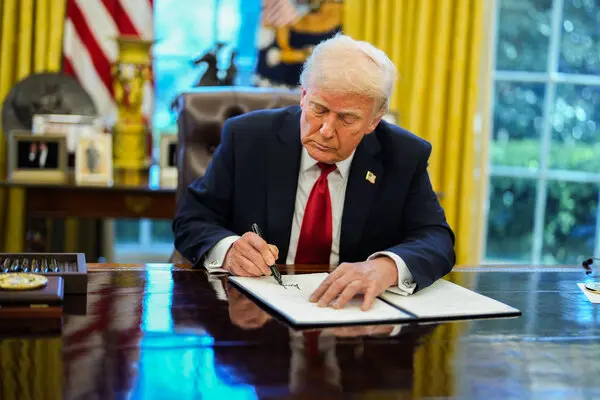• How Bloomberg’s Trade Policy Uncertainty Index Became a Mirror of Global Confusion
There’s a chart doing the rounds again — Bloomberg’s Global Trade Policy Uncertainty Index — and it’s spiking like it did during the US-China trade war, COVID-era bottlenecks, and Brexit’s messiest moments. This time, the trigger is more diffuse: Trump tariffs are back in political fashion, Red Sea shipping disruptions are rattling supply chains, and protectionism is enjoying a renaissance across the developed world. But while the triggers vary, the signal is the same: global trade is, once again, running blindfolded into walls.
That Bloomberg even created this index is quietly remarkable. It means that at some point, one of the world’s most influential financial research teams sat down and said: the world’s trade policy outlook is now so erratic, we need a metric to measure just how confused everyone is. And they were absolutely right.
The Bloomberg Economics Global Trade Policy Uncertainty Index uses text mining techniques to track the frequency of words related to trade policy volatility — tariffs, sanctions, renegotiations, and so on — across major media sources. When mentions spike, the index jumps. And lately, it’s been jumping a lot.
The fact that it’s now "near an all-time high" is more than just a headline. For businesses, uncertainty over trade policy is not just an intellectual concern; it’s a planning nightmare. It means you don’t know whether to invest in a factory in Vietnam, whether your inputs from China will still be tariff-free next month, or whether shipping costs will stay rational for the next quarter. Every decision becomes a guess.
Historically, this index has surged during very specific episodes:
2018–2019: The Trump administration’s escalating tariffs on China, which prompted tit-for-tat responses and endless market volatility.
2016: The aftermath of the Brexit vote, where businesses in the UK and EU spent years trying to model every hypothetical customs regime imaginable.
2020: The COVID-19 outbreak, when supply chains shattered and every country started rethinking global dependence.
Now, it’s different — we’re entering a period of chronic trade uncertainty, rather than episodic flare-ups. The structure of global commerce is being actively contested. “Friend-shoring,” “decoupling,” “strategic autonomy” — these are not temporary adjustments. They are long-term shifts with little consensus on their eventual outcome.
And yet, in a strange way, the Bloomberg index is oddly comforting. Not because it tells us anything hopeful — it doesn’t — but because it confirms that we’re not imagining things. The confusion is real. It’s measurable. And it’s shared.
That reality was echoed just this week in a Scotiabank FX note, where the USD was reportedly trading “mixed to lower” against major currencies as investors waited to see what shape Washington’s next tariff volley might take. A 20% levy on “most” imports, according to a Washington Post leak, is apparently still being workshopped — a day before rollout. There’s also been talk of no exemptions, but also hints that the tariffs might not last long. It's unclear whether this is strategic ambiguity or just improvisation. Either way, US equity futures dipped, bonds were bid, the yen surged, and gold hit a new high. The message couldn’t be clearer: the market’s best hope for stability is that policymakers are bluffing.
So yes, Bloomberg deserves credit — not just for tracking this chaos, but for recognising, before most others, that global trade policy has become too important to trust to gut feel or political spin. The data doesn’t lie. And right now, it’s telling us that uncertainty isn’t just high — it’s structural.
Disclaimer: This content is for educational and informational purposes only. It should not be considered financial or investment advice. Always do your own research or consult with a licensed financial professional before making any investment decisions.




